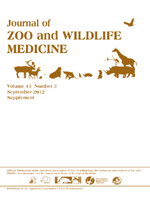Excessive burden of iron, or iron storage disease (ISD), has been reported in a large variety of captive mammal species, including browsing rhinoceroses; tapirs; fruit bats; lemurs; marmosets and some other primates; sugar gliders; hyraxes; some rodents and lagomorphs; dolphins; and some carnivores; including procyonids and pinnipeds. This report collates the comparative evidence for species' susceptibility, recognizing that the data for mammal species are limited. Differences reported in the occurrence of ISD between facilities, or within facilities over periods that span management changes, have been reported in individual cases but are underused in ISD research. Given the species composition, the hypothesis that evolutionary adaptations to the iron content and availability in the natural diet determine a species' susceptibility to ISD (in the face of deviating iron content and availability in diets offered in captivity) seems plausible in many cases. But exceptions, and additional species putatively susceptible based on this rationale, should be investigated. Whereas screening for ISD should be routine in zoo animal necropsy, screening of live individuals may be implemented for valuable species, to decide on therapeutic measures such as chelator application or phlebotomy. Whatever the reasons for ISD susceptibility, reducing dietary iron levels to maintenance requirements of the species in question seems to be a logical, preventive measure.
How to translate text using browser tools
2 September 2012
IRON STORAGE DISORDERS IN CAPTIVE WILD MAMMALS: THE COMPARATIVE EVIDENCE
Marcus Clauss,
Donald E. Paglia
ACCESS THE FULL ARTICLE
hemochromatosis
hemosiderosis
Iron metabolism
nutrition
phylogeny





